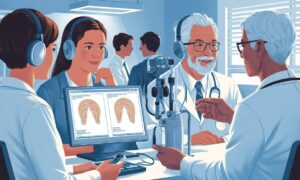Massage therapy has been around for centuries as a natural and effective way to alleviate pain, stress, and tension in the body. However, as technology continues to advance, so too does the world of massage therapy. From new tools and techniques to advanced software and wearables, emerging health tech trends are shaping the future of massage therapy in exciting ways.
One of the most promising areas of development in massage therapy is the use of robotics. While there are already massage chairs on the market that use robotics to simulate human touch, these devices are typically limited in their ability to provide personalized, targeted therapy. However, as robotics technology continues to improve, we may see the development of more advanced massage robots that can analyze a patient’s specific needs and provide customized treatments.
Another area of emerging health technology that is likely to impact massage therapy is virtual reality. While still in its infancy in terms of therapeutic applications, virtual reality has already shown great promise in the fields of pain management and mental health. In the future, we may see virtual reality systems designed specifically for massage therapy, allowing patients to experience a relaxing and immersive massage experience without ever leaving their homes.
In addition to robotics and virtual reality, wearables are also likely to play a big role in the future of massage therapy. Wearables such as smartwatches and fitness trackers are already widely used to track physical activity and monitor health metrics, but they could also be used to provide personalized massage therapy. For example, a wearable device could use data on a patient’s heart rate, stress levels, and muscle tension to provide customized massage therapy recommendations and track progress over time.
Another exciting development in the world of massage therapy is the use of artificial intelligence (AI) and machine learning. These technologies have already shown great promise in a wide range of industries, from finance and marketing to healthcare and education. In the context of massage therapy, AI and machine learning could be used to analyze vast amounts of data on patient outcomes and massage therapy techniques to develop more effective treatments.
Of course, with all of these exciting new technologies comes the need for well-trained massage therapists who can use them effectively. As such, the future of massage therapy is likely to involve increased emphasis on education and training, with therapists needing to stay up-to-date on the latest advances in technology and how they can be used to improve patient outcomes.
Despite all of these exciting new developments, it’s important to remember that massage therapy is still fundamentally about human touch and connection. While technology can certainly enhance the massage therapy experience in many ways, it can never fully replace the importance of a skilled and empathetic massage therapist. As such, the future of massage therapy is likely to involve a delicate balance between technology and human connection, with therapists leveraging the latest tools and techniques to enhance their ability to connect with and heal their patients.



































